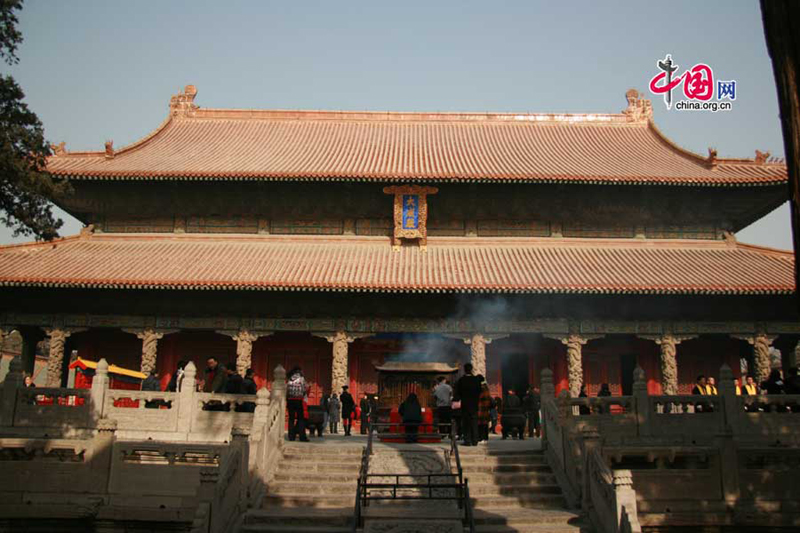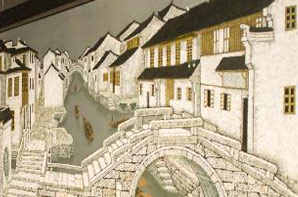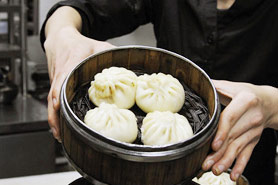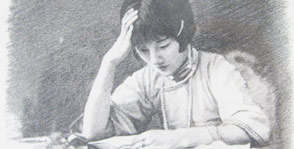Top 10 World Heritage in China
Updated: 2013-06-26 14:05
(Chinadaily.com.cn)
 17
17
 The
The
Confucian Temple, Cemetery and Family Mansion in Qufu (China.org.cn)
4. The Confucian Temple, Cemetery and Family Mansion in Qufu
Qufu, Shandong Province, is the hometown of Confucius (551-479 BC), a great thinker, statesman and educator in China's history, and founder of the Confucian school of philosophy. The place abounds in cultural relics, of which the most famous are the Confucian Temple, Confucian Cemetery and Confucian Family Mansion.
The Confucian Temple, in the center of Qufu City, was built in 478 BC. There are still 466 halls, pavilions and other rooms intact, covering a total area of 21.8 hectares. Repeated improvement and expansion has turned the temple into a palatial complex with nine rows of courtyards. The Great Accomplishment Hall, the major structure of the temple, is 33 meters tall. It is roofed with yellow glazed tiles and has octagonal eaves. The front 10 stone columns are carved with dragons. In addition to a statue of Confucius, the hall also houses stone inscription of the Ming Dynasty, which tells the life story of Confucius in 120 pictures, as well as a great deal of stone tablets.
The Confucian Family Mansion, right next to the Confucian Temple, was the residence of Confucius' descendants and also the residence just next to the imperial palace in scale. Covering an area of 120,000 meters, the family mansion now houses a large number of documents, files and cultural relics.
The Confucian Cemetery, occupying more than 200 hectares, has served as the family graveyard of Confucius and his descendants for more than 2,300 years.
Together, the Confucian Temple, Confucian Family Mansion and Cemetery were made part of the world cultural heritage list in 1994.













